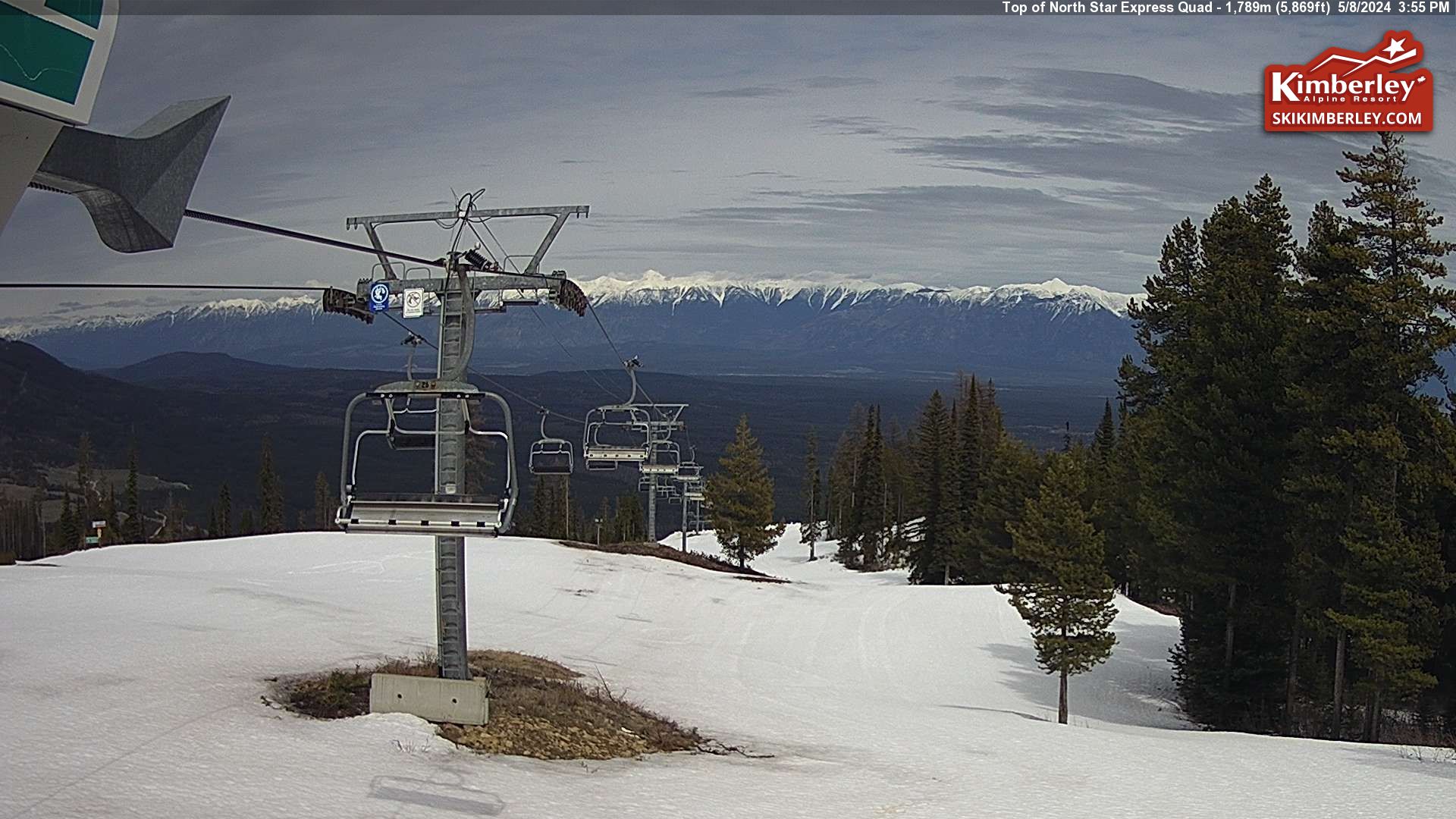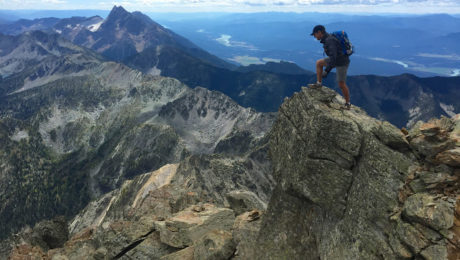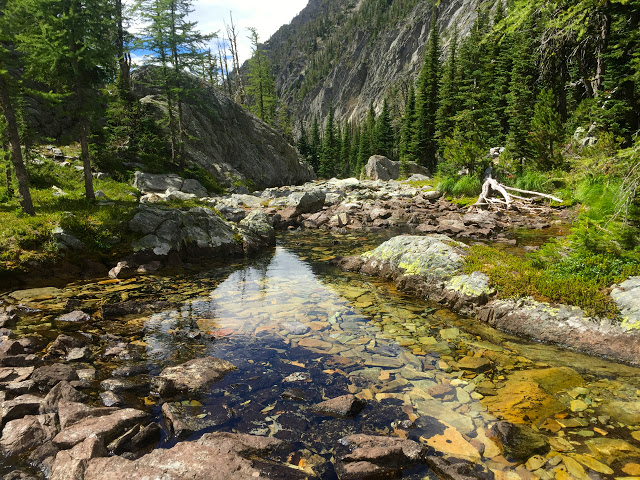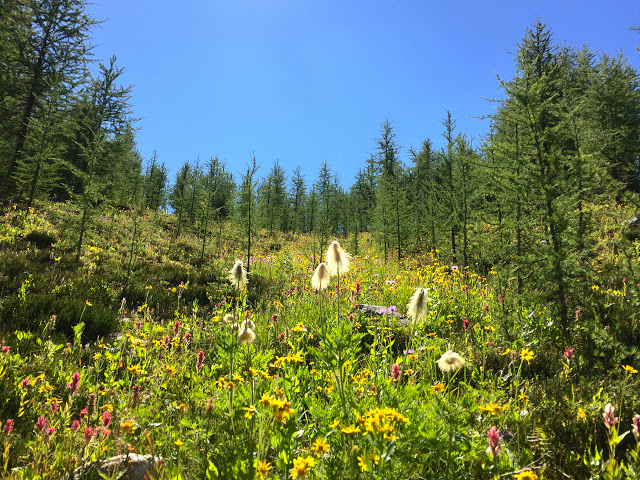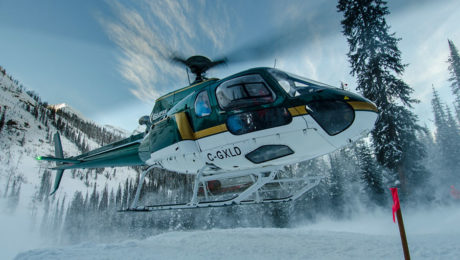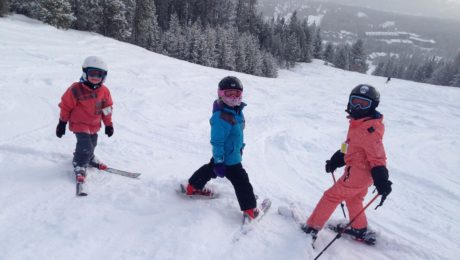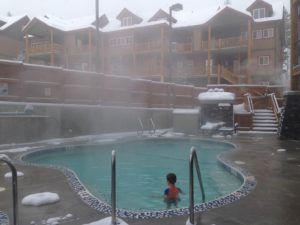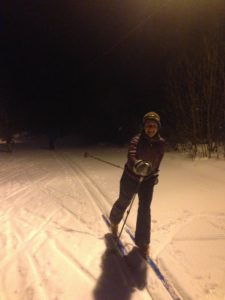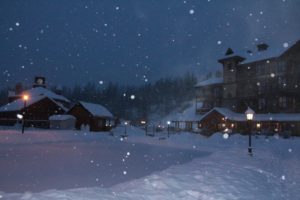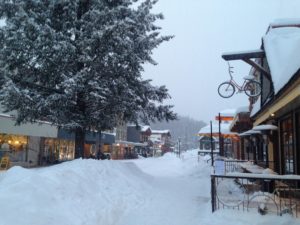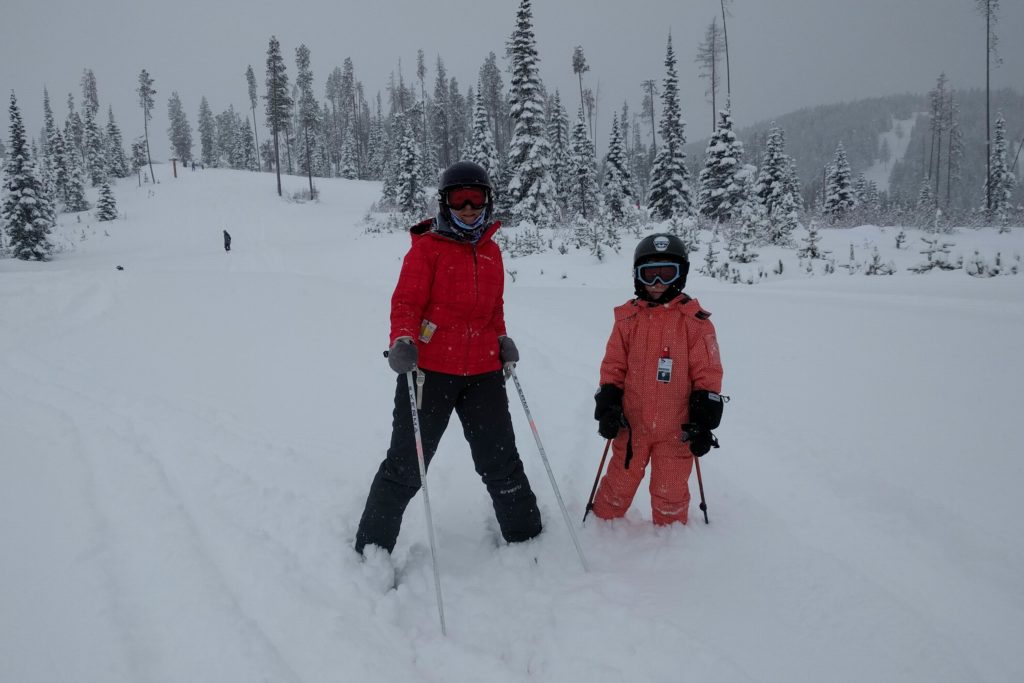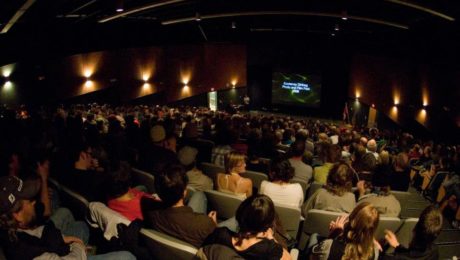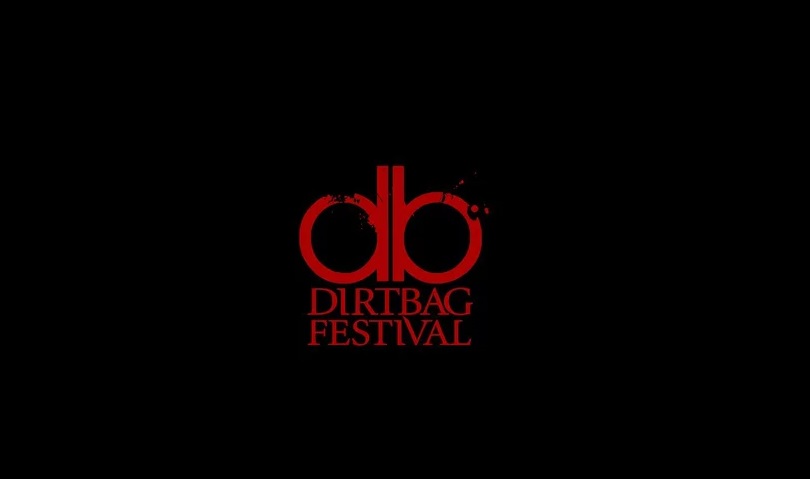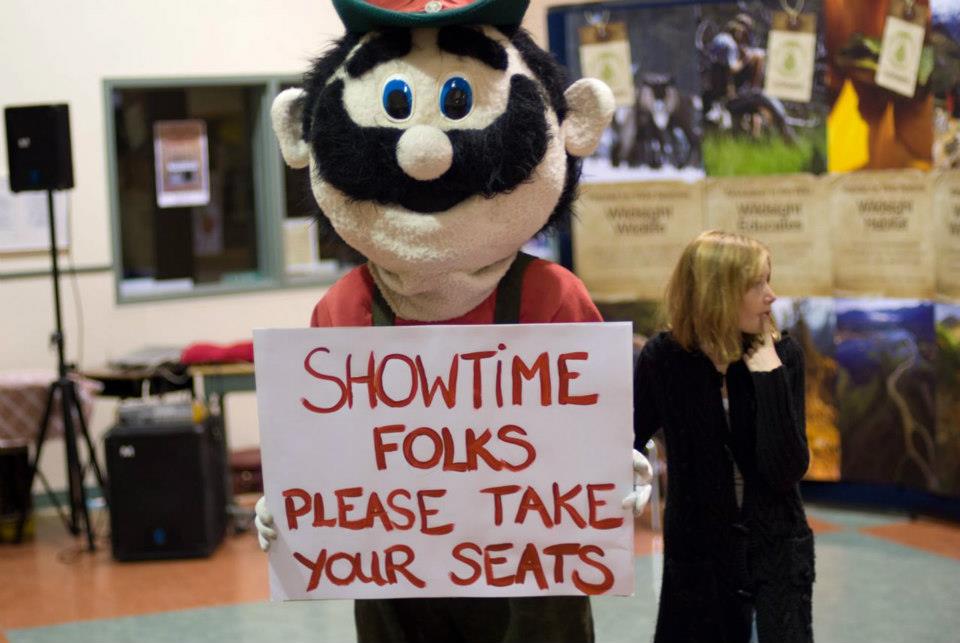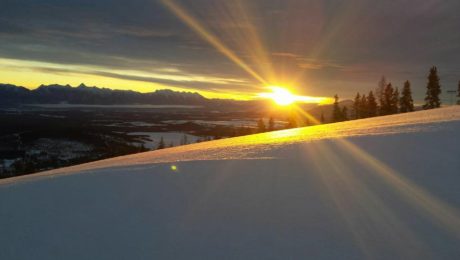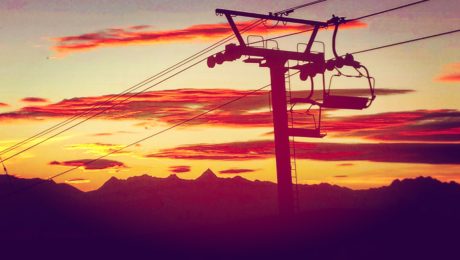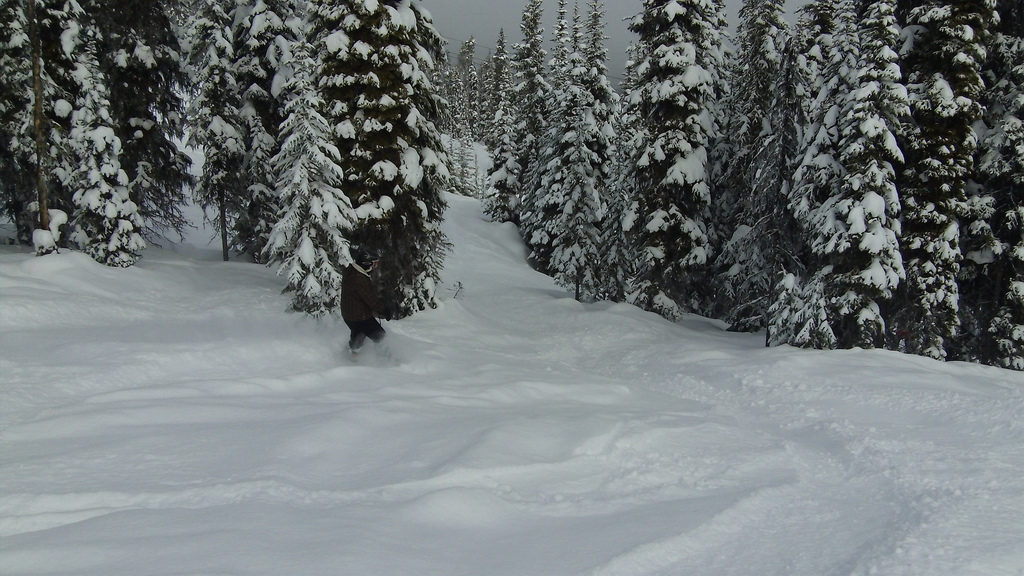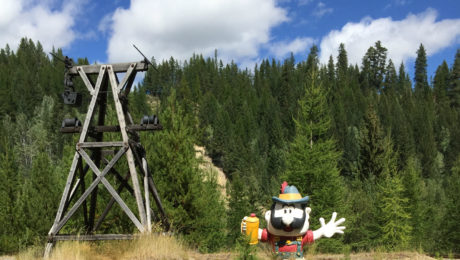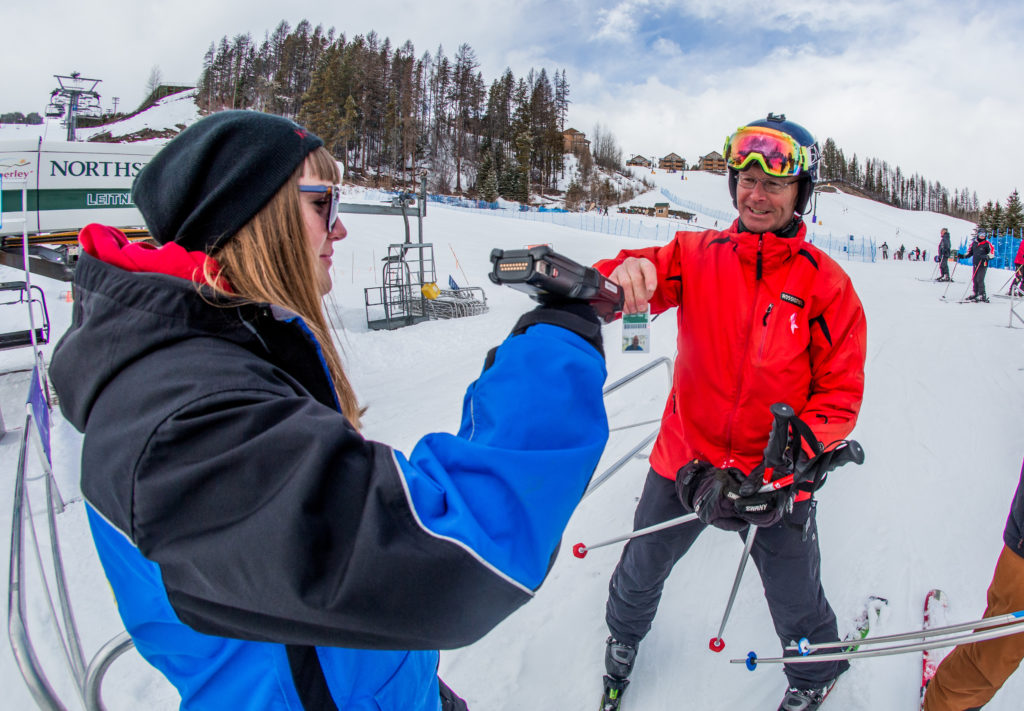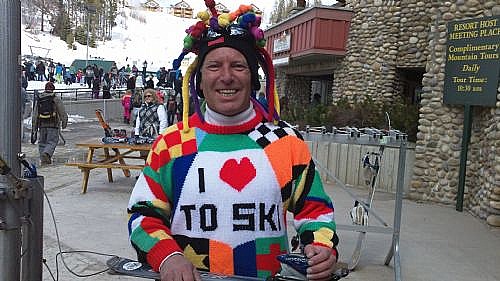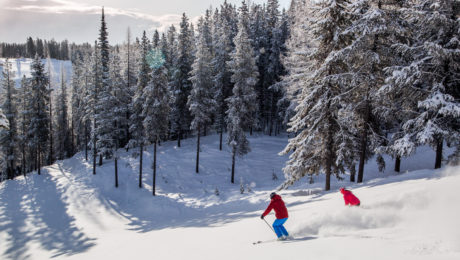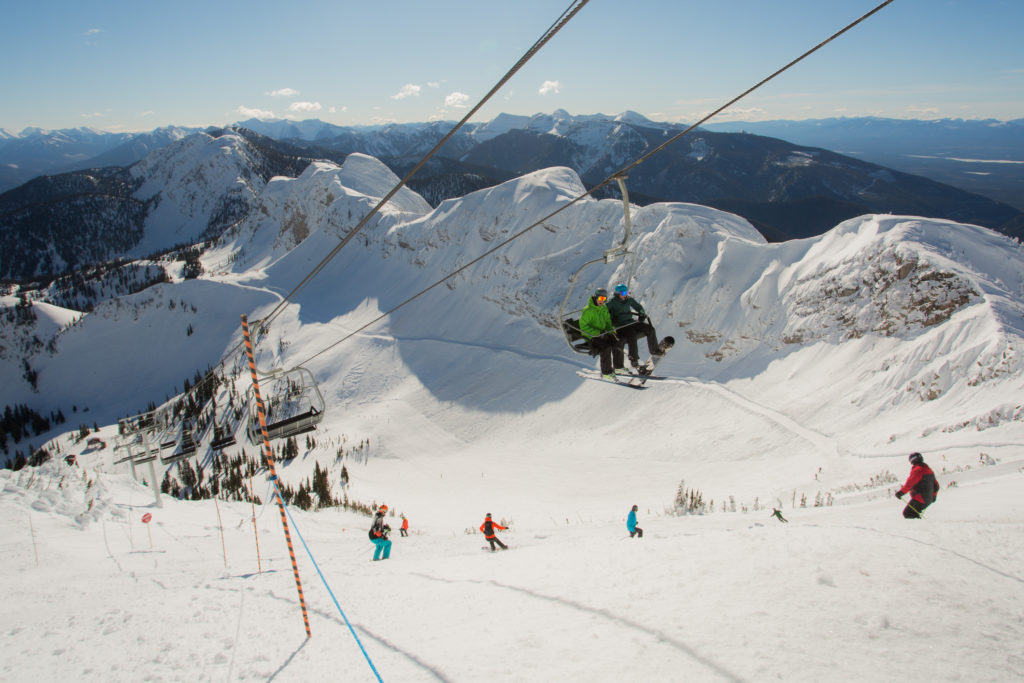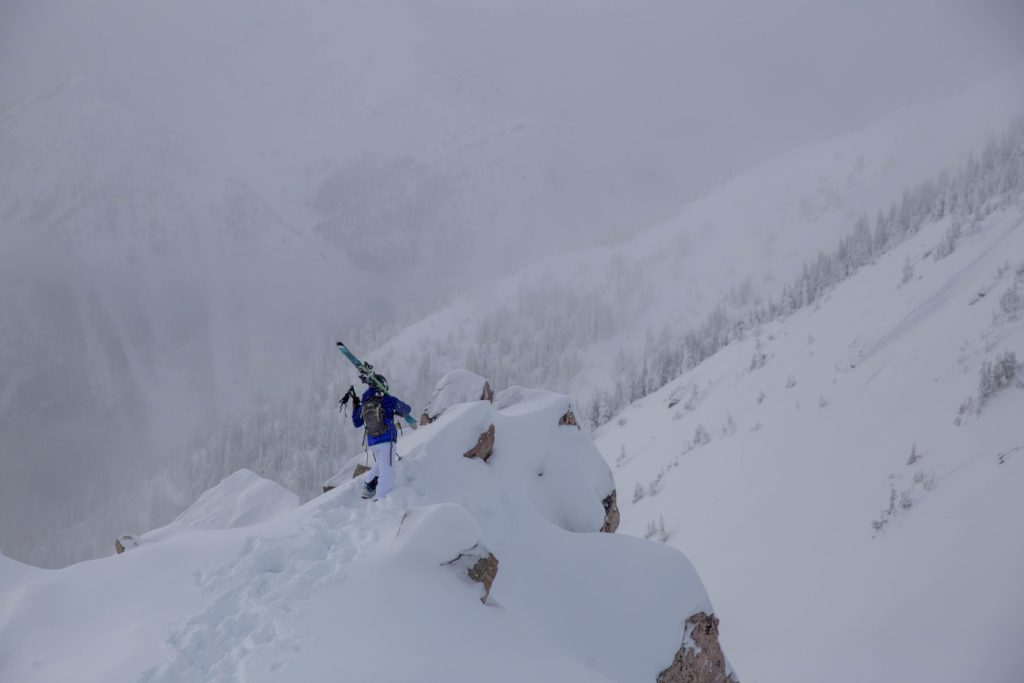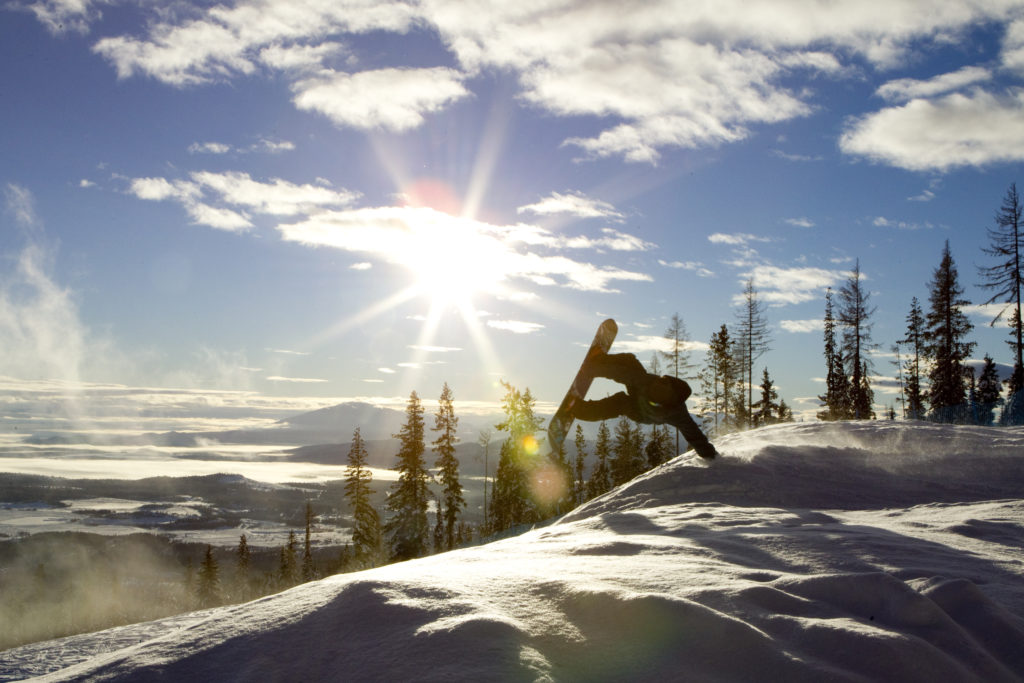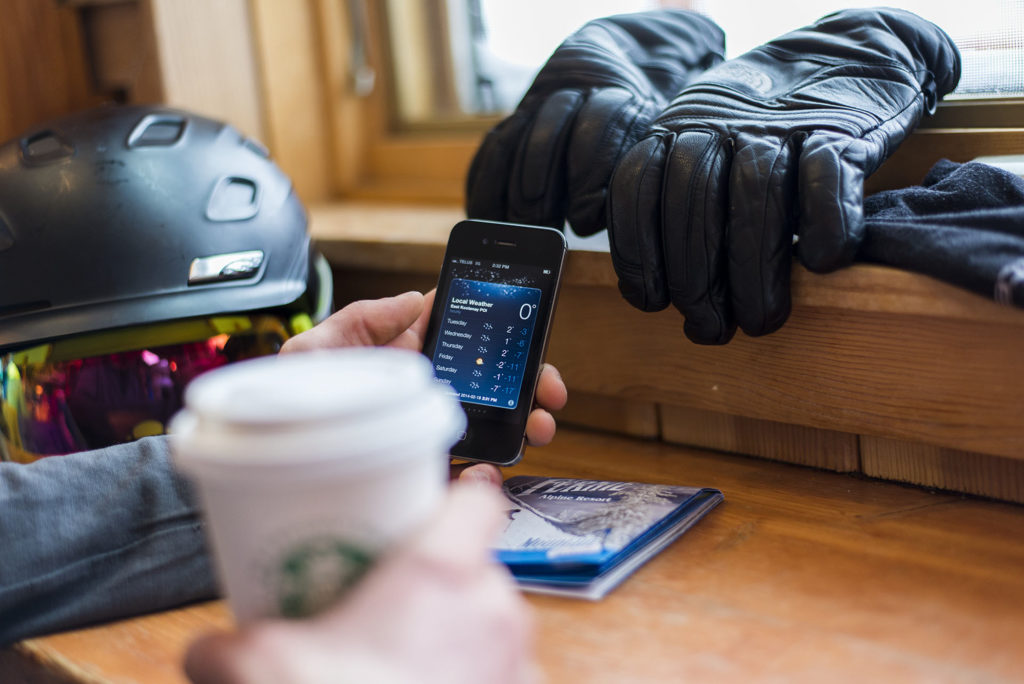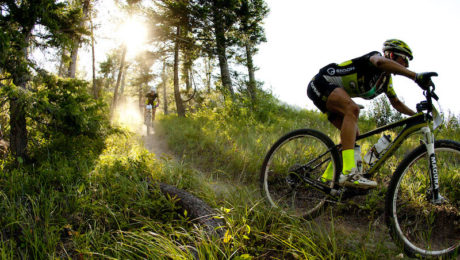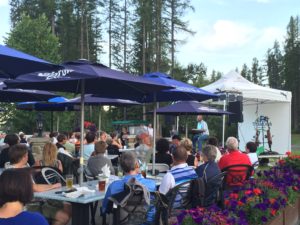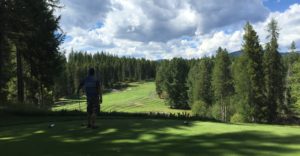The Taunting Temptress – Climbing Fisher Peak
Once in a blue moon something unlikely occurs. A goal beyond expectations – beyond capacity of aging knees – is accomplished.
The view of Fisher Peak from our Kimberley home is mesmerizing. For years I’ve gazed across the Rocky Mountain Trench at that daunting, taunting pinnacle. Fisher dominates the skyline in this range of the Rockies. At nearly 3000 meters it towers over its lofty neighbors.
Last July I watched the second full moon of the month, a blue one, rise near Fisher and said to my brother, “Let’s do it.”
Good weather is critical to mountain climbing. Luckily, the forecast was ideal: clear skies and calm winds. An alpine storm even in summer can necessitate an overnight bivouac. We were not equipped for that nasty contingency.
As predicted a perfect day greeted our early start. Climbing Fisher requires no mountaineering equipment, no technical skills. But it’s a long drive to the 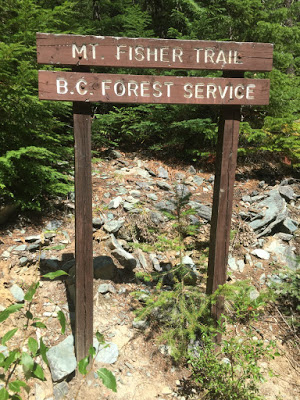 remote trailhead and the sheer, steady steepness of the climb – and the equally grueling descent – make for a long, hard day.
remote trailhead and the sheer, steady steepness of the climb – and the equally grueling descent – make for a long, hard day.
From trailhead to summit the elevation gain is 1400 meters. That’s nearly a vertical mile!
The hike began unfortuitously. When my brother Patrick donned his daypack, the water reservoir was empty – and his pack was sopping wet. A leaky start.
It is imprudent to begin a seven-hour climb on a hot summer day without H2O but we had little option. We’d driven an hour up bumpy logging roads to reach the trailhead. Returning to get water meant we would not have time to complete the ascent. Besides, we were in the mountains. That’s where water comes from. Find a stream, fill up – and beaver fever be damned.
The upward march began in a shaded forest of conifers. After an hour, patches of light started to shine through the canopy and the trail opened across a jumble of rocks. Beneath our feet we heard gurgling, the babbling of an invisible creek. The steepness continued as the path skirted a cascading waterfall, the source of the hidden rumbling – and the source of clean, beautiful liquid sustenance to fill an empty camelback.
After ninety minutes of relentless climbing, the trail leveled and we came upon a beautiful alpine tarn, its crystal clear waters mirroring the jagged peaks enveloping us. Above the small lake a cirque opened up and we had our first view of Fisher, the temptress, still hundreds of meters higher.
A solitary marmot whistled a warning call. The sound echoed loudly off the walls of the rocky amphitheater.
We were halfway to the summit.
The next leg of the assault is difficult: three hundred vertical meters of steep, loose scree. A real b*#ch!
Even with foreshortened hiking poles digging firm, two hard-earned forward steps were countered by a slippery step backward. The scree section is also dangerous. As it steepens, the risk of lost footing and a fall increases. And, worse still, a hiker above can dislodge rocks upon those below.
Self-preservation dictates that you want to be in the lead. Unfortunately, Pat is fitter, stronger and younger than I. So, lagging behind, my focus was 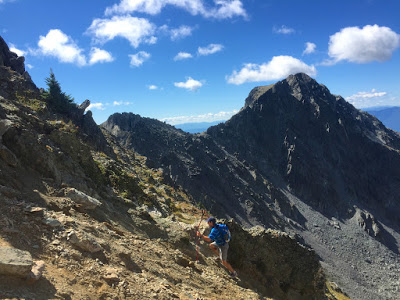 keeping my head up while also keeping it down.
keeping my head up while also keeping it down.
Did I mention the scree was a real b*#ch.
After an hour the loose slope resolves to a saddle – a safe refuge before the final climb to the top. This notch in the mountain is festooned with prayer flags. We took a breather in the thin air and gazed around. We had equaled the height of the nearby Steeples, where we’d seen the moon rise a few nights before. Dibble Glacier, a remnant of the last ice age is visible from this vantage, its ancient blue-gray mass cupped within the Steeples.
The last section begins innocuously with a well-marked switchback through ever-bigger rocks. But soon these boulders become broken, vertical slabs. We abandoned our hiking poles, which became a liability in the four-limbed scramble up, over and around truck-sized stones.
Clinging precariously to handholds and squeezing through narrow fissures, we neared the top. 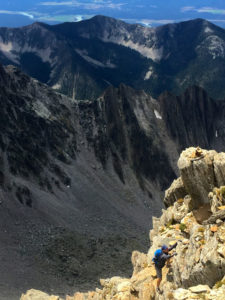 In a few spots only a tiny foothold marked the difference between moving safely upward or making a quick 1000-meter descent. But for us this was the fun part.
In a few spots only a tiny foothold marked the difference between moving safely upward or making a quick 1000-meter descent. But for us this was the fun part.
The top of Fisher is as tiny as it appears from our balcony 30 kilometers away: a small platform with room for just a handful of climbers. I’m not sure what I expected at the peak but was surprised to see just a jumble of huge boulders stacked atop one another. Like the playthings of a giant.
The view from the top is remarkable. 360 degrees of pure horizon. To the north and east an endless ocean of mountain peaks. To the south the blue meandering waters of the Kootenay River and Koocanusa Lake disappearing into the United States a hazy hundred kilometers away. In the west, directly below us, lay the verdant green fields of the Trench. Further distant the bare ski runs of Northstar Mountain stood out clear as day. I could almost see my deck over there in Kimberley. No, I couldn’t.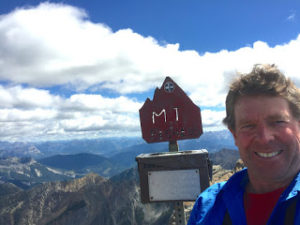
The difficulty with scrambling up to a steep, precarious perch is… what goes up must come down. On the ascent we had concentrated on grabbing, reaching and looking upward. To get down we had to look down. It was disconcerting hanging over a cliff ledge, slipping toward an invisible foothold below.
But we slid safely through the slabs, retrieved our poles at the saddle and surfed down through the scree. Soon we were back at the lovely tarn. We stopped briefly to look back up at the now distant peak. Picas gallivanted about, squeaking cutely, gathering nesting grasses, oblivious to the great feat we had just accomplished.
Surprisingly, the last downward section can be the hardest, an unrelenting ninety minutes of joint-jarring, toe-busting, knee-knocking descent. Alpine wildflowers in radiant bloom helped ease the pain.
We were back in Kimberley in time to enjoy barbequed steak. At sunset we sipped a cold one on the deck and watched as alpenglow lit Fisher’s face. The next blue moon is January 31, 2018. What to do for an encore?
See the original post and more images on Gerry’s blog.
- Published in News
NEW Helicopter Ski Touring Day Tours
Experience Helicopter Assisted Ski Touring from Kimberley Alpine Resort with Boulder Hut Adventures. Come ski the best of the Purcell backcountry as part of a professionally guided, one-day helicopter-assisted backcountry touring adventure!
Start your day with a helicopter pick-up at Kimberley Alpine Resort. You and your guided group will be dropped off at a ridge top for an epic first run. From there, professionally guided ski touring enables you to explore the amazing Purcell Mountains under your own power. The day includes a safety briefing, helicopter transport, lunch and professional guiding service. An additional heli-drop run is an option at the end of the day with a return to all the comfort and amenities that Kimberley has to offer.
Get more information or book your tour from the Boulder Hut Adventures website.
- Published in News
Dirtbag Festival; The Gathering. The Happening. The Celebration.
What binds a community together? What makes us proud to call the place we live home? In Kimberley, for over 92 years, it was the holes we dug in the ground, the thousands who gathered to extract precious metals from the world’s largest lead and zinc mine. It was a town toughened by grit, the damp echoe beneath us. Yet when the mine closed in 2001, we began the search for a new identity, beyond the one previously carved underfoot—an identity that celebrated our stunning landscape and the small-town charm that drew us towards it.
In 2007, an event was born in Kimberley that became an integral part of our identity: The Dirtbag Festival, a visual celebration of the elusive dirtbag lifestyle. The festival, entering its 10th anniversary, is a local cultural phenomenon. It consistently sells out two consecutive nights, and has included a variety of formats toasting the dirtbag lifestyle: the ever-popular community slide show, an eclectic compilation of Kimberley residents’ photographs; locally-produced films, some which are national award winners; spoken word; after parties; presentations by adventure gurus, such as 2016’s keynote Will Gadd; and beyond these events, the pervasive buzz leading up to the weekend, the constant chatter: “Are you going to Dirtbag?”
What exactly is a festival that honours dirtbags? According to its Facebook page, the Dirtbag is, “…a celebration of story gatherers as well as the story tellers, told by dirtbags living in the rebel realms of the wild spaces they call home, through film, photography, spoken word and art. It is a community of artists, activists, pranksters, and adventurers who carry us through dark winters by sharing their stories.” It poses a question to Kimberley residents: “What awes & inspires you? What keeps you going? What’s your place on earth? What’s your story?”
In its 2007 inaugural opener, local dirtbag icons attempt to explain the term “dirtbag”. According to Dave Quinn, “The most valuable thing a dirtbag has is time to spend with friends and to explore passions. Way down on this list is money.” Quinn believes to call someone a dirtbag, “…is to lay a really nice compliment on them.”
Dirtbag co-founder (along with Kevin Shepit) and host of the Travel Channel’s “Big Crazy Family Adventure” Bruce Kirkby says, “Dirtbag’s got a bad sound, but it’s really a great thing: You put your money—what little you have—into the things that count. You don’t spend all your time trying to make money. You do things that are fun.” Kirkby believes that the success of the Dirtbag Festival is that it speaks, “to what we value, and why we were here. And folks like seeing what their friends and neighbours shot in the last year, as opposed to going to Banff to see what the entire world has produced. So it’s become a very intimate event.”
Shepit believes that the Dirtbag Festival was embraced from the beginning. “It represents letting go,” he says. “Letting go of tomorrow’s worries, yesterday’s mistakes, workload, debt load, stress load, and the celebration of being able to, at a moment’s notice, simply notice the moment.” The new man behind Dirtbag’s curtain, Steve Tersmette, believes, “Dirtbaggery is our lifeblood. Look out our backyard. How can we not be a town of dirtbags?”
Dirtbag films have showcased a collage of wild adventures: family canoe trips through Alaska; 15-year-olds urban skiing off downtown rooftops; solemn Indian pilgrimages; the quiet narration of multi-day treks through the St. Mary’s Alpine; and the ever-popular openers, featuring Jedi dirtbag John Haner (see link above).
The spirit of Dirtbag brings a community together in the most unusual ways: Ryan Lunge’s 2014 Dirtbag Film winner, “Pirates of the Kimberlean” featured ten neighbourhood children from three to six years of age. It included special effects, green screen, waterfall cable cam shots, pirate outfits and props crafted by parents, and a 16-foot long pirate ship replica Lunge built in his back yard. Lunge, who had never shot a video before, learned everything from a book, and watching YouTube. “It became a bit of an obsession for the year prior to Dirtbag,” Lunge said, “but we had such a blast.”
How does a town celebrate its identity and culture? It gathers in a sold out theatre, hoots and hollers as photos and films flash upon a screen. It stands teary-eyed, smiling, sending ovations to the dirtbags we’ve lost. It celebrates the lifestyle of living in the Kootenays, among the people who are proud to call Kimberley home, and the Dirtbag its festival.
Dirtbag Dates:
Dirtbag Festival 2017 (March 24-25, 2017)
Submissions Open: December 15, 2016
Submissions Close: February 19, 2017
Ticket Sales Open: Feb 1, 2017
More information on the Dirtbag Festival Facebook page & Website.
- Published in News
Canadian Rockies International Airport – The mountain airport that puts you in the heart of adventure
Carrying my skis over my shoulder after the last run of the day, the alpenglow stopped me in my tracks. Gazing up, the late afternoon sunlight was fading, casting a gorgeous peach and orange glow on the rocky summits across the valley. Although I had only arrived earlier that day, just like me, they looked rosy, rested and content.
For most mountain adventure seekers, finding an airport within a three or four hour drive of their destination is considered a win. Kimberley BC is nestled in the heart of the Kootenays’ famed “Powder Highway”, and has the Canadian Rockies International Airport a mere 20 minutes away, offering multiple flights daily from Vancouver and Calgary.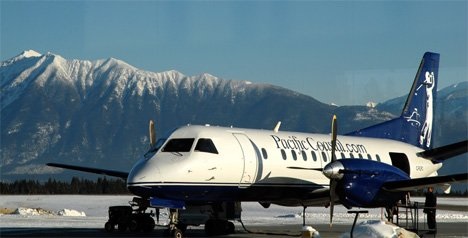
Surrounded by the jagged, picturesque peaks of the Rocky Mountain range, adventure comes as a 360 degree view of summits, slopes, forest, wilderness, lakes and more.
Located at an elevation of 3,084 feet and featuring an 8,000 foot long runway, the Canadian Rockies International Airport is small but welcoming, which means less fuss when you land or leave.
When you first arrive, you can’t help but feel the relaxed pace of the area, but only some things move a little slower here. Beyond the small town pace and “slow food” passions of many restaurateurs, the adrenaline that accompanies adventure thrives on the mountains and in the nearby wilderness areas.
Your journey can read like a choose your own adventure novel. Accommodation? The choice is yours: there’s slopeside hotels, condos, townhouses and mountain houses. Ready for an outdoor adventure? There’s four seasons of excitement. When the snow flies, the area is transformed into a winter wonderland. Kimberley Alpine Resort is one of the only mountain ski areas in Canada where you can be on the chairlift within an hour of landing at the airport. From there, choose your passion: Kimberley features 1,800 acres of alpine skiing, with night skiing available and access to a world-class Nordic skiing facility.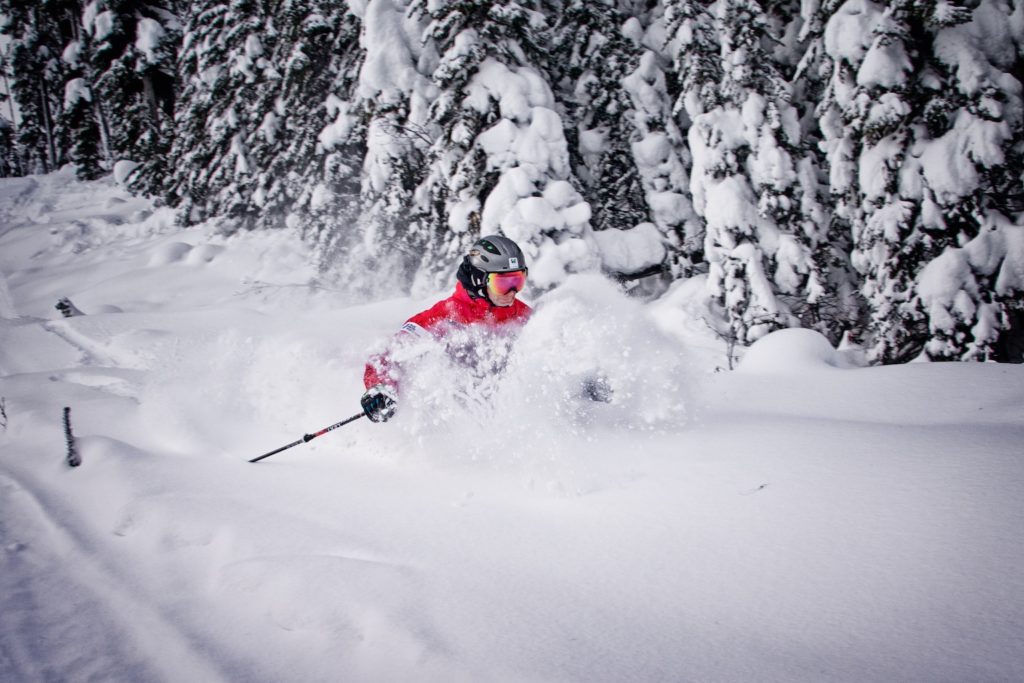
While often dubbed as “family-friendly”, the backside of Kimberley Alpine Resort offers powder stashes, steeper fall lines and graded terrain. With fewer crowds and plenty of storms, Kimberley is a secret hideaway for adventurers in the know.
Speaking of secret, ask a local to tell you the best place for a tranquil moonlight snowshoe, where to soak in natural hot springs, sip the best craft brew in the land, eat in a centuries-old barn, glide under the stars on perfectly-set tracks. The only thing you’ll be left wishing for is more hours in the day.
Photos: Mike Byrnes, YXC & The Real McKenzie Photography.
- Published in News
Kimberley, A Good Place to Smile
Head north into Kimberley, and you’ll notice a billboard: “Smile. You’re here. We’re happy.” Ascend into a landscape of the highest city in Canada, the snowpack of surrounding mountains, the people readied for cold weather: steep metal rooves, wood-fired chimneys, Thule boxes stuffed with skis. Enter a town with tales of grandfathers who descended into earth, drilling, jackhammering, and blasting into what was the world’s largest underground lead-zinc mine. Pause for a moment, and you’ll notice Kimberley’s quiet charm, the mining homes built eighty years ago, kids who still wander into ravines and build forts, the town’s one traffic light, and for a loonie listen to the yodel of Happy Hans from the world’s largest cuckoo clock. When you ask directions, there’s a friendliness to the people. You’ll notice their smiles, like those settled in a place they needed to be. It doesn’t take long to discover, whether you live here or are just visiting, Kimberley’s a good place to be doing just about anything.
Among long-time residents, whose families carved Kimberley out of rock, is a new population calling Kimberley home: A younger generation, who’ve set roots here for the lifestyle and the vast array of activities right outside their door. It’s not long before they notice how long it takes to grocery shop, distracted by new friends telling tales of their latest adventures. As organic farmer and counselor Kelly Comishin says, “And all those adventures are from understated, humble folk, out because they love it. Not for bragging rights.” When you talk to the people of Kimberley, there’s a humility to them, and a sense that “good” is sometimes the quietest form of “best”. It’s a town of belonging, where everyone’s welcome. A town, once defined by mining, now by the eclectic mix of industry reflecting the culture of people who live here: skateboard manufacturing, coffee roasting, gin distilleries, climbing gyms, microbreweries, coffee shops and locally-sourced restaurants. All these, infused into the established culture of brick buildings, restaurants, hardware stores, and small businesses that have supported families and served the community for generations.
Kimberley’s a town that will charm you. You’ll never want to leave—there’s too many good things going on. When you enter Kimberley, you’ll smile.
Like the sign says, You’re here. We’re happy.
To Help Put a Smile on Your Face:
Kimberley Alpine Resort: Over 75 runs, five lifts and 2,465 vertical feet, with Rocky Mountain panoramas. Longest night skiing run in Canada.
Kimberley Nordic Club: X-C Ski Trails, with over 40 kms of snow-cat groomed trails; 3.3 km lit for night skiing.
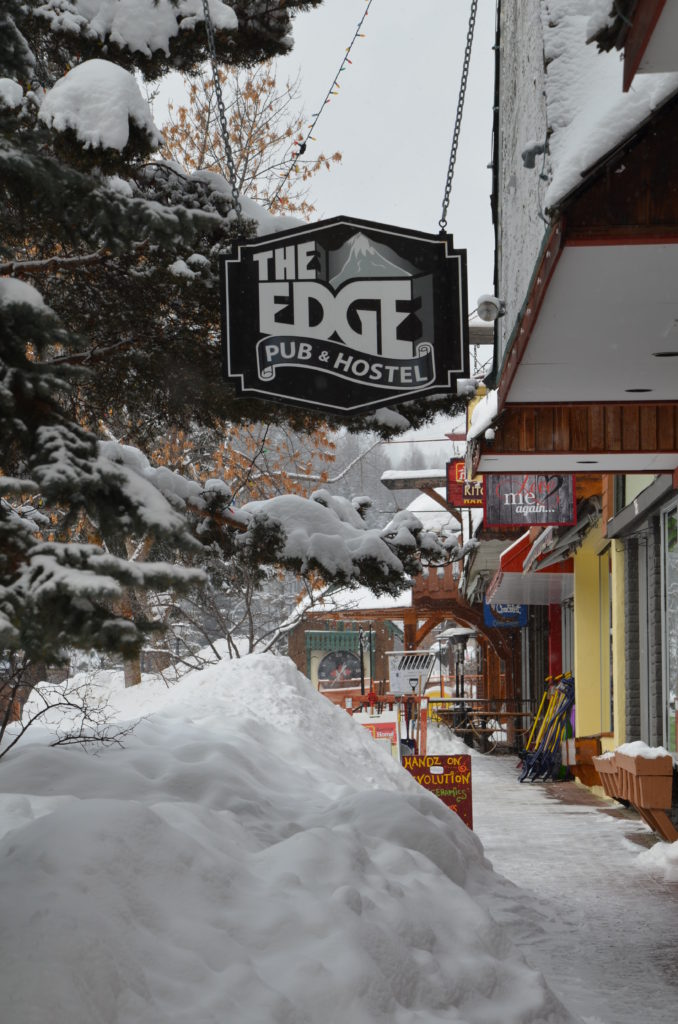 Outdoors Adventures: The Kimberley Nature Park is one of Canada’s largest trail networked municipal parks; as well, a 25 km North Star Rails to Trails joins Kimberley to Cranbrook on a converted paved railway bed. Travel anywhere, just minutes outside of Kimberley, for an abundance of lakes, rivers, trails, and access to the Purcell and Rocky Mountains.
Outdoors Adventures: The Kimberley Nature Park is one of Canada’s largest trail networked municipal parks; as well, a 25 km North Star Rails to Trails joins Kimberley to Cranbrook on a converted paved railway bed. Travel anywhere, just minutes outside of Kimberley, for an abundance of lakes, rivers, trails, and access to the Purcell and Rocky Mountains.
Golf: There are three public courses within Kimberley, and eight within a ½ hour drive.
Fine Food: Kimberley hosts the most restaurants per capita in Canada! Whether you’re looking for a German-themed meal in the oldest building in Canada, or a Rails to Trails chicken burger and mucky fries, Kimberley has a cuisine for everyone.
Activities and Attractions: Indoor climbing gym; aquatic centre; pedestrian-only brick-lined platzl, downtown shopping, and restaurant hub; underground mining railway.
Art and Culture: Galleries. Arts and cultural centre (Centre 64). Live performances. Heritage sites, and a variety of festivals.
Accommodations: In Kimberley, there’s an accommodation for every budget: from mountain chalets, to ski-in/ski-out luxury lodges. Enjoy the Rocky Mountain alpenglow from your bedroom or hot tub.
Getting Here is Easy: Kimberley is only a 20 minute drive from either The Canadian Rockies International Airport, or from Highway 3, one of Canada’s two primary east-west routes.
Photos: Cali Sammel, Raven Eye Photography & Mike Reece
- Published in News
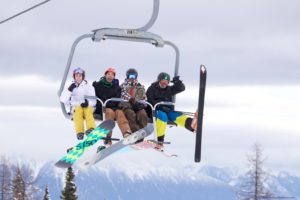 If you’re thinking of booking a ski getaway this winter, now is the time to do it! With Early Booking Vacation Offers available for Christmas and Family Week vacations, as well as special long stay savings packages and spring skiing trips with savings of up to 48%!
If you’re thinking of booking a ski getaway this winter, now is the time to do it! With Early Booking Vacation Offers available for Christmas and Family Week vacations, as well as special long stay savings packages and spring skiing trips with savings of up to 48%!
Visit our Early Booking Offers page to book a getaway online or give our vacation specialists a call at 1-800-258-7669 to book over the phone.
- Published in News
August 22, 2016
If Americans have a cultural stereotype about Canada, it’s that we’re a land of ice and snow inhabited by “Eskimos” and policed by red-coated Mounties on horseback. (The Mounties drive in police cars and they have the same tools as cops in America… and the Eskimos, well, they are actually called Inuit, and live much closer to the North Pole).
But Canadians certainly do celebrate winter, and of course, skiing and snowboarding. Our resorts – though perhaps not quite as familiar or accessible as Vail or Tahoe — compare favourably in every way. Whistler, of course, is the most widely-known—the resort hosted the 2010 Winter Games alpine skiing events—and it’s continuously ranked highly amongst the (mostly) American readers in SKI Magazine’s annual resort poll. And Banff/Lake Louise are on the radar map—though most Americans (like Canadians) visit there in the summer months.
Resorts of the Canadian Rockies believes that the best discoveries in skiing are the unexpected ones—and, like siblings, their three resorts—namely, Fernie Alpine Resort, Kimberley Alpine Resort, and Kicking Horse Mountain Resort—offer a rootsy, authentic Canadian ambiance that makes each of them worth visiting—even on one trip.
Perched above a historic mining town that still relies on nearby natural resources, FERNIE ALPINE RESORT is all about powder and adventure. Poking skyward like a giant baseball mitt, the rugged Lizard range hauls in over 35 feet of legendary Rocky Mountain fluff annually and attracts freeriders from all over the world. If you’re lucky, you’ll be in town during the raucous Griz Days celebration that celebrates the mythic mountain man who makes it snow. Independent “non-chain” stores and restaurants thrive in the red-brick building main street of historic Fernie, once named the “Coolest Town in North America” by Rolling Stone magazine. Indeed, many Americans who visit here comment on how much it’s “like Telluride or Aspen used to be.”
KICKING HORSE MOUNTAIN RESORT west of Golden is a true “big mountain” experience, with 1,260 metres (4,133 feet) of vertical—fourth-highest in North America. Compared by those in the know to American resorts like Jackson Hole and Squaw Valley, Kicking Horse boasts 121 runs, four alpine bowls and 85 inbound chutes spread across 2,800+ acres of skiable terrain. No stay at Kicking Horse is complete without a visit to Canada’s most elevated restaurant: Eagle’s Eye Restaurant, a mountain-top, fine-dining experience. Four mountain ranges come together to create a mountain panorama that’s second to none.
Nestled in the majestic Purcell Mountains in BC’s southeastern corner, KIMBERLEY ALPINE RESORT receives more hours of sunshine than any other resort in the province. Its 80 runs range from open glades to gentle cruisers to thigh-burning bump runs. Dive into the Easter Bowl on the mountain’s backside or enjoy Kimberley’s front side cruising. Kimberley even offers Canada’s longest night skiing/riding terrain. Stay slope-side and ski from your door in the morning or enjoy the charming Bavarian-themed town just down the hill. Kimberley compares favourably to the family friendly vibe found at Snowmass, Keystone, or The Canyons—with a superb ski school and perhaps the most high-value vacation packages in North America.
Thanks to Canada’s devalued currency, Americans considering a ski vacation north of the 49th parallel receive a thirty percent discount, before they even start shopping for the best deals of lifts, accommodation, and lessons. “Our close proximity to the United States means that Fernie and Kimberley have always had visits from keen skiers in border states—folks who live in Whitefish, Kalispell, Sandpoint, and Spokane,” says “Powder Matt” Mosteller, spokesperson for the Resorts of the Canadian Rockies. Holidays at Thanksgiving, Christmas, New Year’s, Martin Luther King Day, President’s Week and even Easter attract skiers and riders from a wider net, including Seattle, the Bay Area, Los Angeles and even major Midwestern and eastern cities.
And there are a few other differences. Take money, for example. Canadians use the same dollars and cents system that Americans have, but your wallet won’t be budging with one-dollar bills if you ask for change for a five. Canadians have “loonie” and “toonie” one-dollar and two dollar coins. Different denominations of dollars ($5, $10, $20, $50 and $100) are in different colours (and some words, such as ‘colour’ have an extra ‘u’ in them – don’t ask.) Gas (and all liquids) are priced in liters – $1.20 per liter equals about $4.00 per gallon of gasoline.
Snow depth is measured in centimetres (doesn’t “thirty centimetres” sound deeper than “eleven inches”?). And the outside temperature is in degrees Celsius. Don’t freak out if the temperature is minus 5, that’s only 23 degrees Farenheit, perfect skiing temperature.
Oddly, some things are the same. If you ask the bartender for a pint of beer, he’ll pour you a 12 ounce glass. And if you need anything else, just ask! To dispel another myth—not all of us speak French, (and we actually say ‘a-bout’, not ‘a-boot).’
Welcome to Canada, partner. Your powder is waiting.
Words: Steven Threndyle
Photos: Raven Eye Photography, Vince Mo, Brooke Wilson, Abbydell Photography
- Published in News



